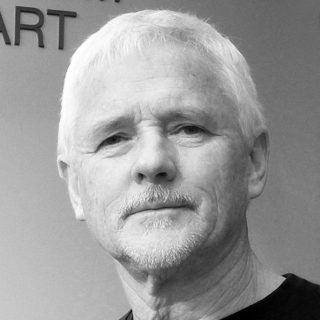
John Neylon
John Neylon is an award-winning art critic and the author of several books on South Australian artists including Hans Heysen: Into The Light (2004), Aldo Iacobelli: I love painting (2006), and Robert Hannaford: Natural Eye (2007).
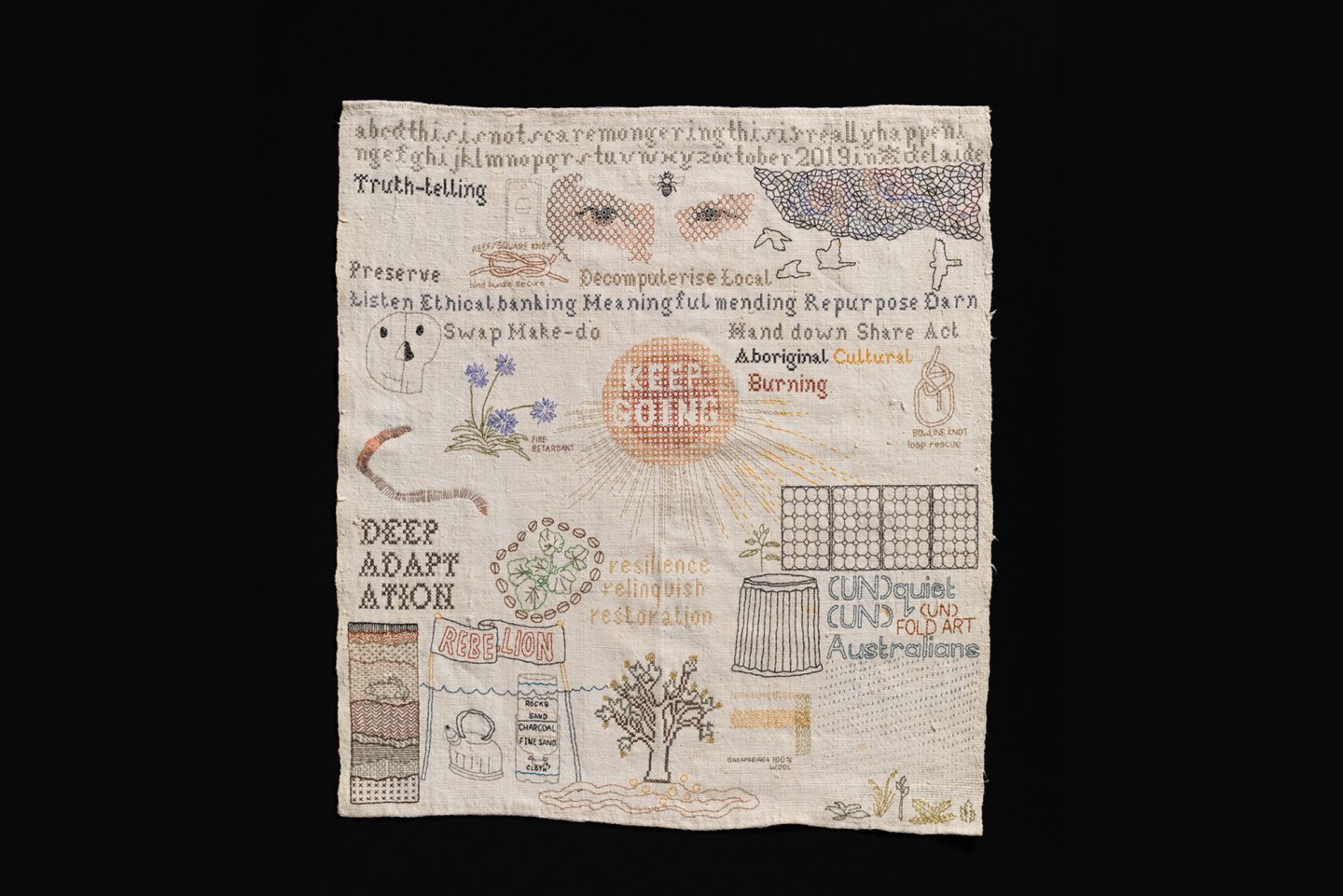
Adelaide Review arts writer John Neylon surveys the city’s visual arts landscape to pick out some of the highlights for the month of March.
Dark Places: Janine Dello, Sharyn Louise Ingham, Kate Dowling
Newmarch Gallery
6 March – 9 April
Three artists gazing at reflections. Sometimes of self. Sometimes of nature. Nothing could be more simple or more complicated. If clever minds have deliberated long and hard about the reflection it is for good reason. It remains one of the most powerful attractors for the human imagination. The reason? As the Dark Places artists’ statement has it: reflections exist between reality and illusion. Apply that to the self-reflection and the image becomes “an illusion of self as other, as a shadow within and away from the reality of self.” Simple really. Except. Isn’t an illusion an illusion? And isn’t ‘self’ a social construct, aided and abetted by neurological snap crackles and pops? But never let empirical evidence stand in the way of a good image. If these artists see shadows and dark places; feel anxiety instead of restful contemplation, that’s their choice. Might as well start here as anywhere. After that it’s over to the art.
Being pictorial rather than gesture artists, each puts faith in the aesthetics of forms and the associative power of the figurative to create images of interest to others. These paintings are effectively mirrors into which each will gaze and see whatever they want. Janine Dello trawls the shadows of self-voyeurism, suspending her subjects in an uncertain zone between commodified desire and exploitation. Kate Dowling says that she has “always had a fascination with the idea of otherworldly spaces.” The focus of this current body of work is the idea that “a space exists where time is uncertain and the boundaries between moving and stillness are ambiguous.” In consequence Dowling’s imagery lends itself to a Snapchat reading where people and places belong to a twilight world glimpsed from a speeding train. Sharyn Louise Ingham’s current mission is to reveal the interconnectedness of all life forms. Bushland walks have resourced observations and reflections on the complexity of the biosphere we inhabit. Pools of water act as way points along a corridor of unfolding realisations.
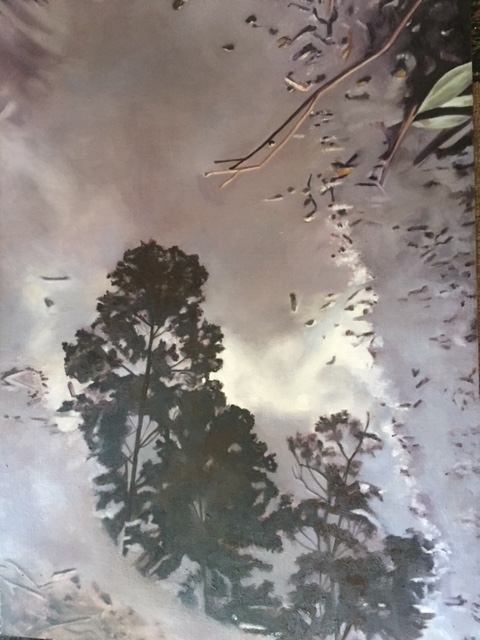
Material Girls: Kate Bohunnis, Sam Gold, Anna Gore
Praxis ARTSPACE
6 February – 6 March
Was a time when the word ‘material’ described the stuff you bought at a haberdasher.. Art theorists and cultural anthropologists, god bless them, have continued to invoke the benefits of paying attention to ‘material culture’ as a means of being truly connected with physical and social reality. And artists? Well, mention the word ‘materiality’ and off they go in all directions, bestowing all kinds of positive outcomes on being woked to the possibility that the humblest of materials can tell the most amazing stories. As Material Girls demonstrates, it is never straightforward. Any material in the hands of an artist makes and takes form. In this process the idea that there is an ‘essence’ in stuff, be it pre-owned fabrics, clay, glass or bin liner can be obscured by the form (representational or abstract) that creates narratives in the viewer’s mind which have little or nothing to do with how material gets used.
The artists in this exhibition are generally aware of this issue. Kate Bohunnis adopts minimal form to keep the focus on the shiny, unblemished character of stainless streel. So, when the steel gets a punch in the nose as in an active accumulation – a steel pole deliberately crumpled at one end – there is a moment of arrested attention to materiality. The simple, vessel forms of Sam Gold, particularly hand built black stoneware, create interest in the intersection of simple geometric volumes being energised by evidence of controlled, aggressive thumb imprints. Gold is able to carry this conversation between form and surface into another body of work – charred and sandblasted Douglas fir. Anna Gore’s oil on canvas paintings demonstrate a different approach to the theme with figuration (plant forms) doing battle with varied forms of mark making and infills.
Material Girls is a collaborative exhibition showcasing new work by these artists and is the culmination of an eight-month, Adelaide Fringe-funded collaborative project held at George Street Studios in Thebarton, South Australia.
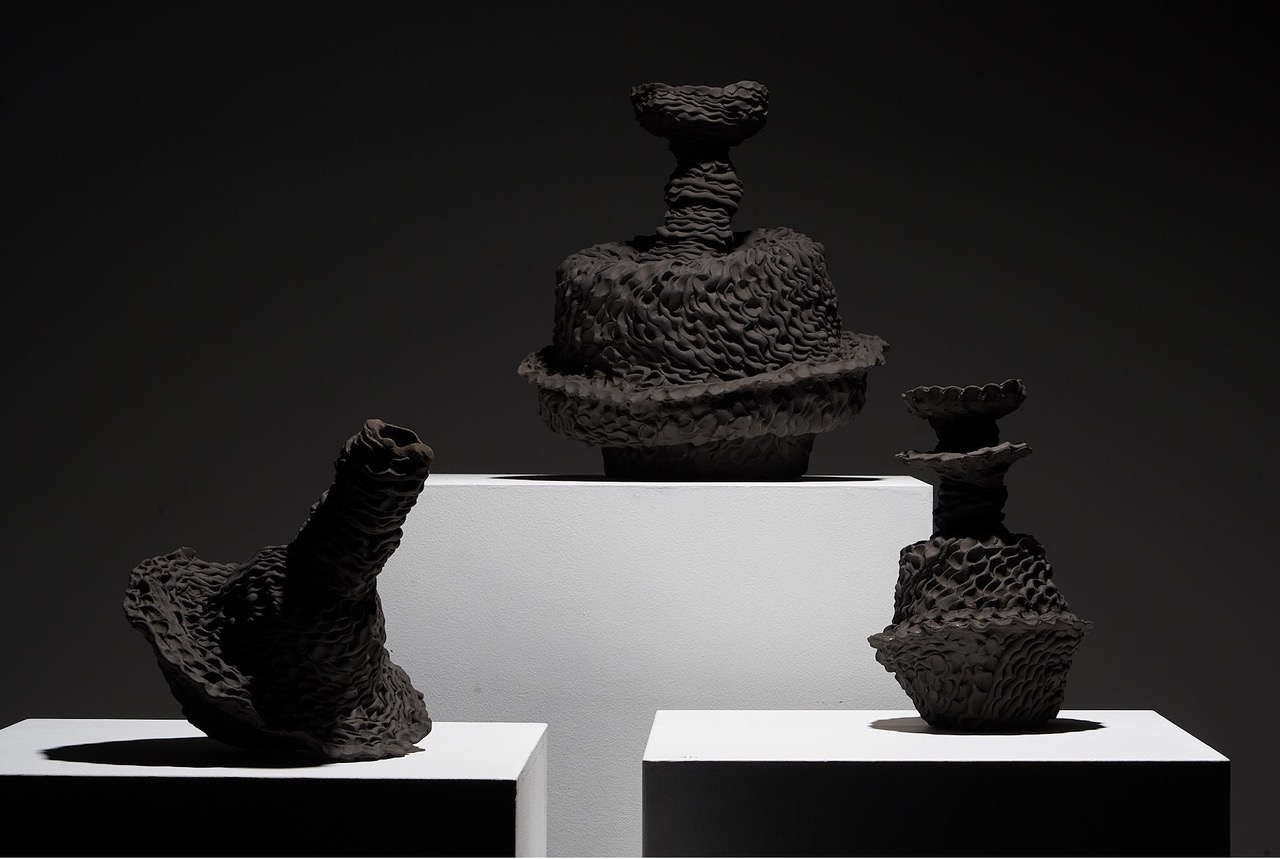
Island to Outback: Ria Byass, Quentin Chester, Gethin Creagh, Prue Coulls, David Foreman, Ruth de la Lande, Wendy Haylock, Janine Mackintosh, Nick Pike, Deb Sleeman, Maggie Welz, Kenita Williamson: Curated by Eleanor Scicchitano
Praxis ARTSPACE
12 March – 9 April
What happens when some Kangaroos Island artists are exposed to the big sky country in South Australia’s north? A group of 12 made the journey in 2018. The working base was Coward Springs a desert landscape on the edge of the mound spring system and the Old Ghan Line. Kathie Stove, in her catalogue essay for the show feels that despite the differences in terrain there was common ground. “Islanders, born or made, are different.”, she says, ”They are individuals, often excessively so. They are windswept yet hugged by the sea. They are torn between being independent and demanding to be helped, often at perverse times. People in the outback are similar, creating a world within a world.” It was clearly a destabilising experience – working in a space that was not defined by the usual props – roads, fences, buildings and trees. The Island, while continuing to be ‘home’, may never look quite the same. A follow-up exhibition is surely on the cards.
Vessel
The Packing Shed, Harts Mill
21 February – 15 March
For almost a decade, The Packing Shed, Hart’s Mill Port Adelaide has been a go-to venue for enthusiastic art lovers looking for confirmation that the creative spark shines bright in the Port every night. Curator Tony Kearney has steered the project through a series of thematic iterations including Rust, Salt, Tar and Bridge. This year it‘s Vessel – quite an appropriate one, you would think for the Port. Remarkably this Port-centric series has built a solid cohort of loyal artists (numbering around 50 – 60) who all rather like being in the show. Around one third of the inaugural group are represented in Vessel. There are three ‘blow ins’ – so membership is tight. Apart from enjoying the challenge of coming up with something interesting to say about the Port, a number of artists see it as an opportunity for a bit of studio cross-dressing, working in media and formats not usually associated with their practices.
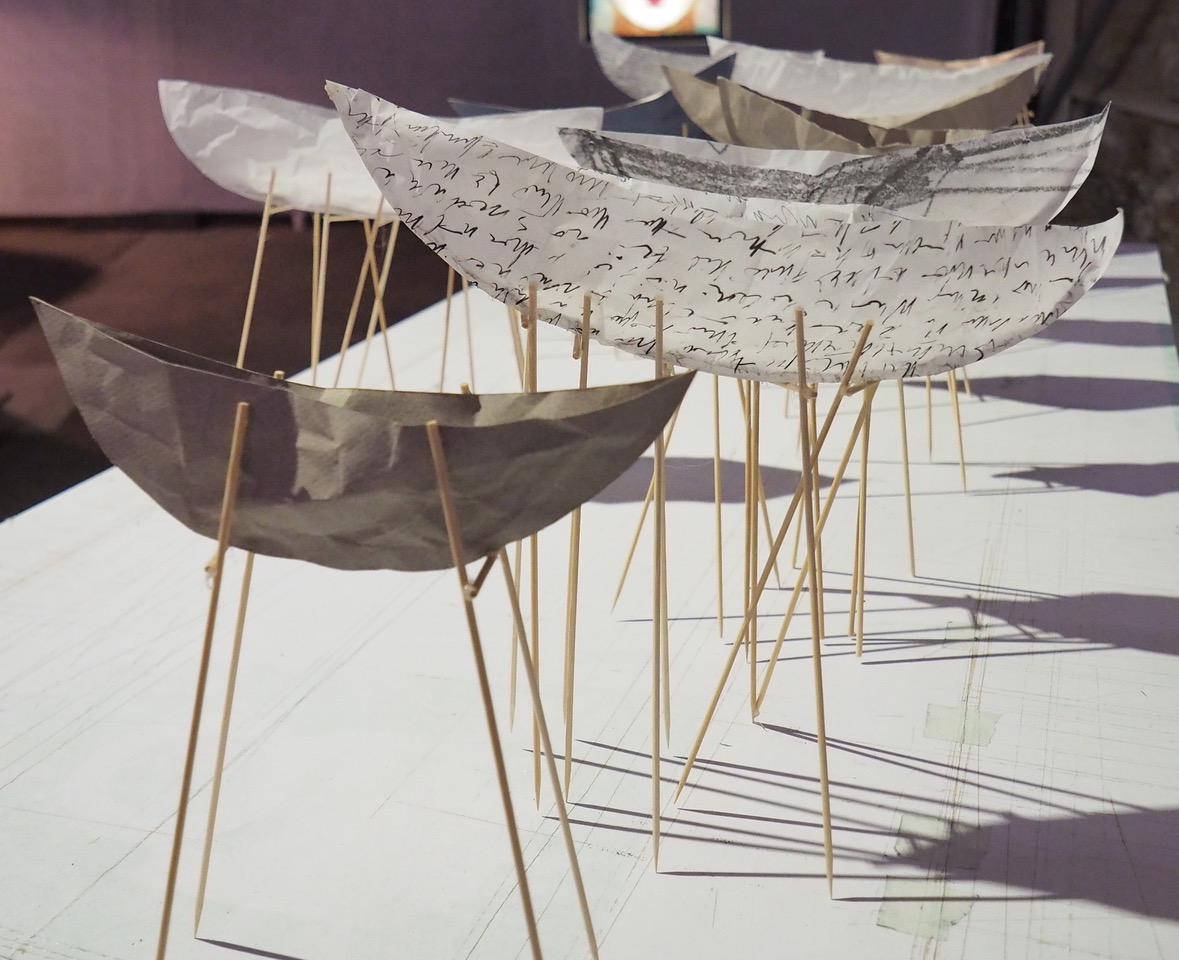
An example is CHEB (aka Christine Cholewa and Deb Jones) both glass artists but also collaborationists on community art spaces. Their ‘vessel’ is Tinnie Tinnie, a dingy made of flattened drink cans, looking like an entry for the Henley On Todd Regatta. You can buy into this vernacular masterpiece at $1 a can. Another special feature of this project is that it brings together all manner of artists – some like Trent Parke, Narelle Autio, Nici Cumpston, Hossein Valamanesh, Angela Valamanesh, Kate Breakey and others who have established national/international profiles. There’s something very ‘Adelaide’ about this congregation of established and emerging talents and reputations – and very ‘Port Adelaide’ about the inventiveness, the make-do grittiness of many works, and sentiments. Kearney you’ve done it again.
Drastic Fabric
Adelaide Central School of Art
11 February – 21 March
The line-up of fabric-centric works is a reflection of curator Andrew Purvis’ curiosity about a trend in art practice which has seen a number of local established and emerging artists engaging with symbolic and material properties associated with traditions and concepts associated with this thing called ‘fabric’. The Mistress of the Black Line, Sera Waters, plies her needlework with assurance and conviction. Central to Waters’ practice is the capacity of humble needle work to encapsulate worlds of concerns and, ultimately, a call to the barricades. In a digital world where every waking monument seems drowned out by social and commercial messaging, a simple length of cloth spelling out the political realities for anyone seeking a home in a new country, might seem too coy, too cute, too insignificant. But Water’s message is intensified by the intimate language of decorously stitched interlocking of the walls and fences that shut people out and down. In short it is memorable in a way that banners and social media posts can only dream about.
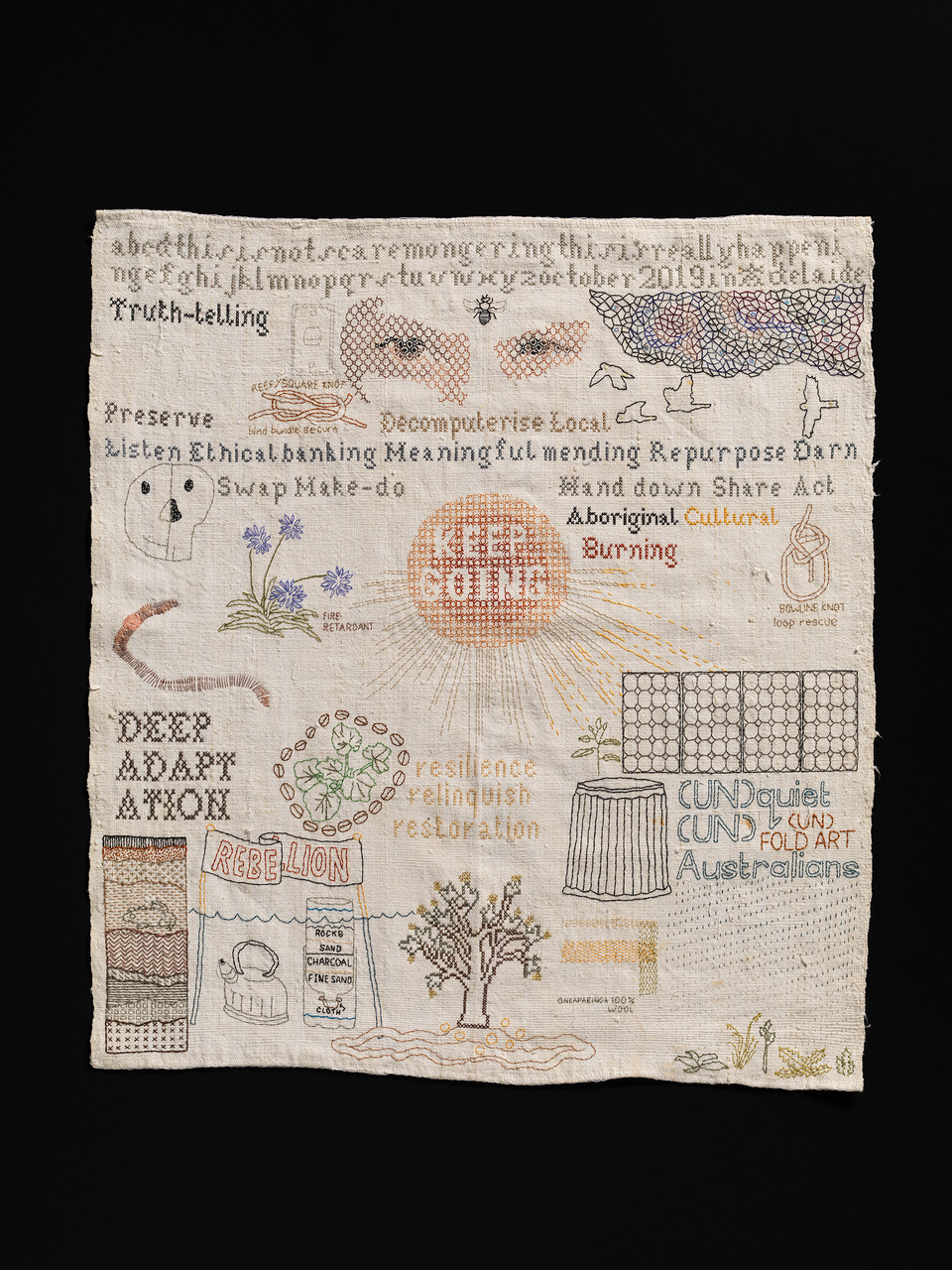
Spend time with Waters’ Survivalist Sampler which looks like a page torn from that late 60s bible The Whole Earth Catalog (WEC). Don’t be a bystander – Waters’ Collaborative Prepping tablecloth is waiting for your contributions (stitching or drawn). Just ask the front office for instructions and you too can become a Drastic. Carly Snoswell’s earnestly exotic paeans to fandom have all the hallmarks of love turned to emotional fudge by the power of obsession. I Love You More Than This is a pillow case to leave your cheek imprinted with the mark of the Thousand (hand sewn) Sequins. Snoswell’s practice is a fascinating fusion of the domestic intimacy and public display. And in testing the margins between adulation and obsession – it’s creepy. Henry Walker hits the sweet spot with his Borrowed Wetsuits panels made from re-purposed wet suits – the perfect marriage between art and surfing. It’s a love affair that blossoms as the artist stitches units of neoprene to form panels that echo the joyous days of hard edge colour painting. Small blemishes and creases hint at previous lives, insane wipe-outs and occupants. Elizabeth Jenner’s Amazonian effort of knitting salvaged copper wire into an outsized blanket is slightly unnerving. The artist sees the wire and its outer plastic sheathing (piled in a corner al la Felix Gonzales-Torres) as symbolic of her connection to society. But, up close, the wire frays into spiky tendrils and the possibility of electrocution comes to mind.
If still in a fabric state of mind, and looking for more celebratory imagery the current (until 8 March) exhibition at Gallery M, Collaboration: Val Giles and Prue Wheal, delivers spectacular works that demonstrate what something called ‘Art Quilting’ is all about.
Craige Andrae: Project 6: Backyarder,
Southwest Contemporary
29 February – 11 April
The old vinyl needle is skipping tracks across that all time favourite album Contemporary: Top Hits as rarely-glimpsed art flaneur Craige Andrae hits the walls again after a quarter of a century absence from the local exhibition scene. Was he playing chess in New York in New York all this time? Drinking a contemplative whisky with Leonard Cohen in a hill-side monastery? Maybe. With Andrae you never know. Some say he has been running a successful local design business. One thing is certain. Make that two. He never stopped thinking about art. And he really wanted to step back into the spot light – on his terms. Backyarder is open mike night for Andrae, an ‘I’m Back’ moment to test his own resolve to make something that matters and an announcement to his original A Team (that mysterious 1990s and early 2000s Adelaide push of Shaun Kirby, Bronwyn Platten, John Barbour, Bronia Iwanczak, Linda Marie Walker among others) and to the wider Adelaide community that ideas that seemed so necessary to the creative journey as the century closed out, still have lives to run and places to go. Foremost among these is the interrogation of art practice, the kind of drilling down associated with the philosophies of generations of activists and disruptors from Duchamp, Dada, the Situationists, to Beuys, Kosuth and beyond. In this context Backyarder exists as a personal diary of relationships that Andrae considers, still guides his path. These are reflected in works that pay homage, or parody, well-known works by iconic figures. Castor, a wheel barrow wheel from the House of Bunnings, sits on an A plinth – a clear referencing of Duchamp’s Bicycle Wheel (1913) – as well as “Adelaide’ and the ‘A Team’. Enduring Constant (made from stacked plastic cones is a Brancusi riff, as is Entitled (a vertical wall stack of plastic tubs) a nod to Don Judd.
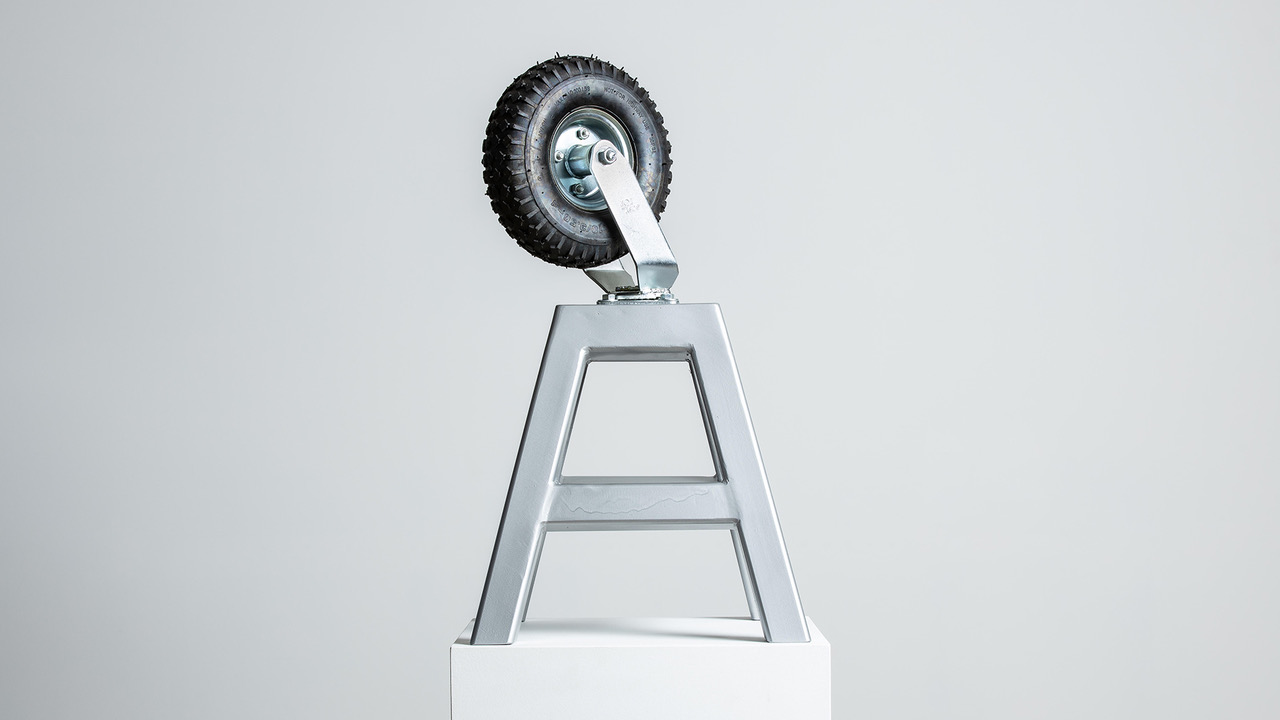
“It’s a backyarder response to minimalist and conceptual art,” Craige says of this exhibition. “I’m revisiting some of the big art questions in a much more handyman, local, DIY, Adelaidian approach… So, where does making contemporary art in Adelaide fit in? It’s a question and I don’t necessarily have an answer!” Some who come to see this show won’t necessarily recognise the question, or think it’s worth asking. For hipsters who can only live in the Now, this kind of behaviour will look so last century. But the received wisdom of art’s traditions, as Andrae knows so well, lies in the ongoing conversations that the present has with the recent and distant past. He has, and I suspect, others around town, unfinished business, that the Southwest Contemporary project has the maturity and sense of agency to deal with. My suggestion – see the show and sign up for its critical agenda. You won’t know yourself.

John Neylon is an award-winning art critic and the author of several books on South Australian artists including Hans Heysen: Into The Light (2004), Aldo Iacobelli: I love painting (2006), and Robert Hannaford: Natural Eye (2007).